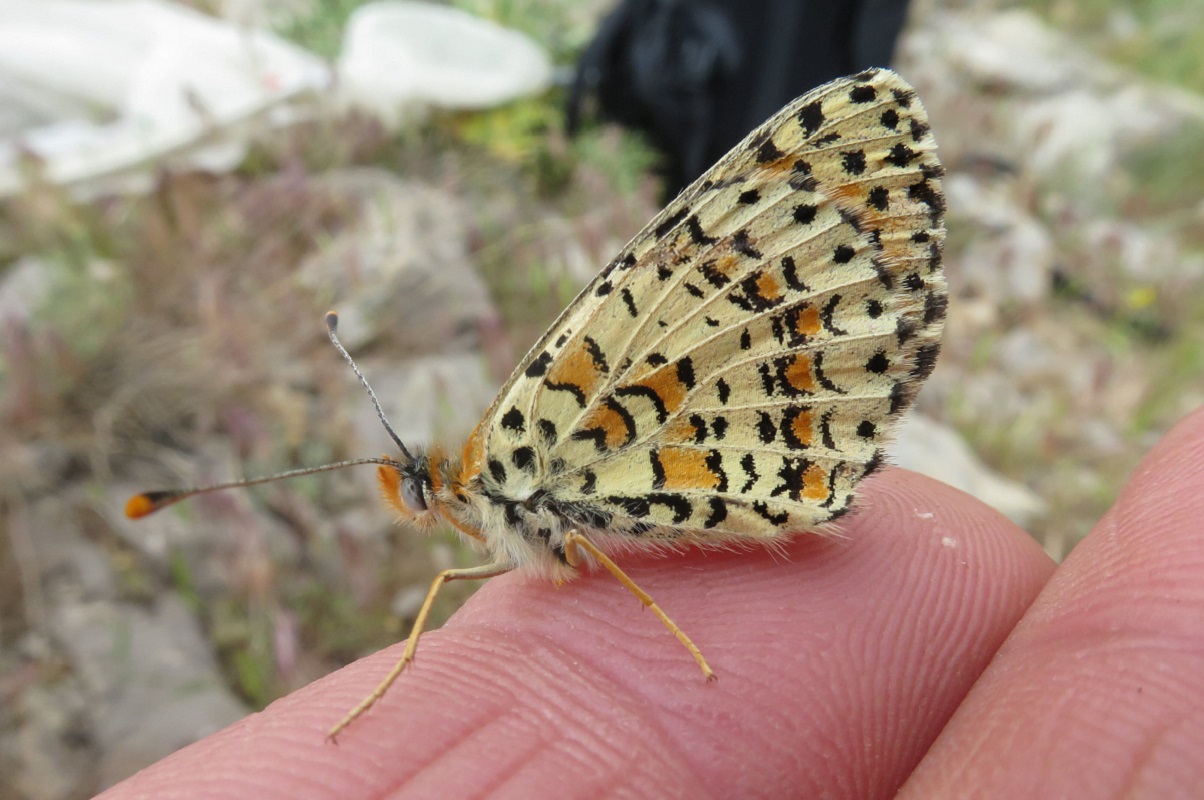Researchers discover that Fritillary butterflies sporadically interbreed with their very distant relatives

Alina Perevizintsova
Published on 9 September 2021

Researchers from St Petersburg University and the Zoological Institute of the Russian Academy of Sciences have found that genealogically distant butterfly species Melitaea didyma and M. acentria sometimes interbreed. These species separated at least five million years ago (almost the same period separates humans and chimpanzees).
For small-numbered M. acentria this sporadic introgressive hybridisation results in higher genetic diversity, increasing their survival chances. The research that makes us take a fresh look at the evolution of living organisms is supported by a grant from the Russian Science Foundation. The research findings are published in the journal Molecular Ecology.
The formation of hybrids – organisms obtained after crossing genetically different forms – is more widespread in nature previously thought. Usually, only closely related species can hybridize. For example, hybrids occur in some populations of Daphnia – crustaceans from plankton.
They significantly complicate the definition of the boundaries between different species. However, some cases are known when hybridisation occurred between very distant relatives: for example, between Homo sapiens and Neanderthals, whose common ancestor lived about 800,000 years ago.
The researchers from St Petersburg University and the Zoological Institute of the Russian Academy of Sciences have managed to detect the hybridisation of even more distant species: fritillary butterflies M. didyma and M. acentria, living on the slopes of the popular Mount Hermon ski resort in northern Israel.
Their common ancestor existed at least five million years ago – modern humans and chimpanzees are about as far apart on the phylogenetic tree (six million years). To obtain this result the scientists performed whole-genome sequencing and analysed 27 genomes of three species of fritillary butterflies.
It turned out that some specimens of small-numbered M. acentria sporadically interbreed with more common M. didyma, resulting in gene flow from M. didyma to M. acentria. In general, one of the reasons for species extinction is precisely the loss of genetic diversity. The fact that acentria butterflies are ‘fed’ with genetic material through hybridisation with a distant congener could therefore be a factor of survival and further evolution for the acentria.
Moreover, as the researchers note, introgressive hybridisation is not total in this case. Only some specimens interbreed with another species. However, this is sufficient for the emergence of a stable gene flow. The researchers even managed to catch one butterfly that turned out to be an interspecific hybrid.
"When we examined the morphology of M. acentria, we noticed that it resembled M. didyma. This was unexpected for us because these two species are distant relatives. Such “coincidences” are mostly the result of adaptation to similar environmental conditions. However, sometimes they occur as a result of introgressive hybridisation. We have analysed whole genomes, which showed a unidirectional gene flow from didyma to acentria," said Elena Pazhenkova, the first author of the article, a doctoral student at St Petersburg University.
Elena Pazhenkova, a doctoral student at St Petersburg University (left) and Vladimir Lukhtanov, Principal Researcher at the Zoological Institute of the Russian Academy of Sciences and Professor at St Petersburg University (right), during their expedition to Mongolia in 2019. Photo by Vladimir Lukhtanov
Vladimir Lukhtanov is a Principal Researcher at the Zoological Institute of the Russian Academy of Sciences and a Professor at St Petersburg University. He says that hybridization usually leads to the fusion of two species or to the appearance of infertile offspring, that is, to the dead-end of evolution. That is the dead-end of evolution.
Until recently, it was therefore believed that such a scenario of ‘enrichment’ of a species with new genetic material was in principle impossible. However, in recent years, more and more works have appeared that encourage scientists to take a different view on the processes of evolution of living beings.
"It seems that we are at the stage of changing the scientific paradigm. Biologists have long been convinced that the evolution of living beings can be represented as a branching tree. This metaphor (Tree of Life) might not be entirely correct and might soon be discarded," said Vladimir Lukhtanov.
"Introgressive hybridisation suggests that it might be more correct to represent evolution as Web of Life, in which the emerging new branches are horizontally linked to each other due to the gene exchange."
"Additionally, the fact that we have identified an understudied natural mechanism that makes it possible to maintain genetic diversity may be important for the development of a general strategy for the conservation of a wide variety of living organisms," said Vladimir Lukhtanov.
